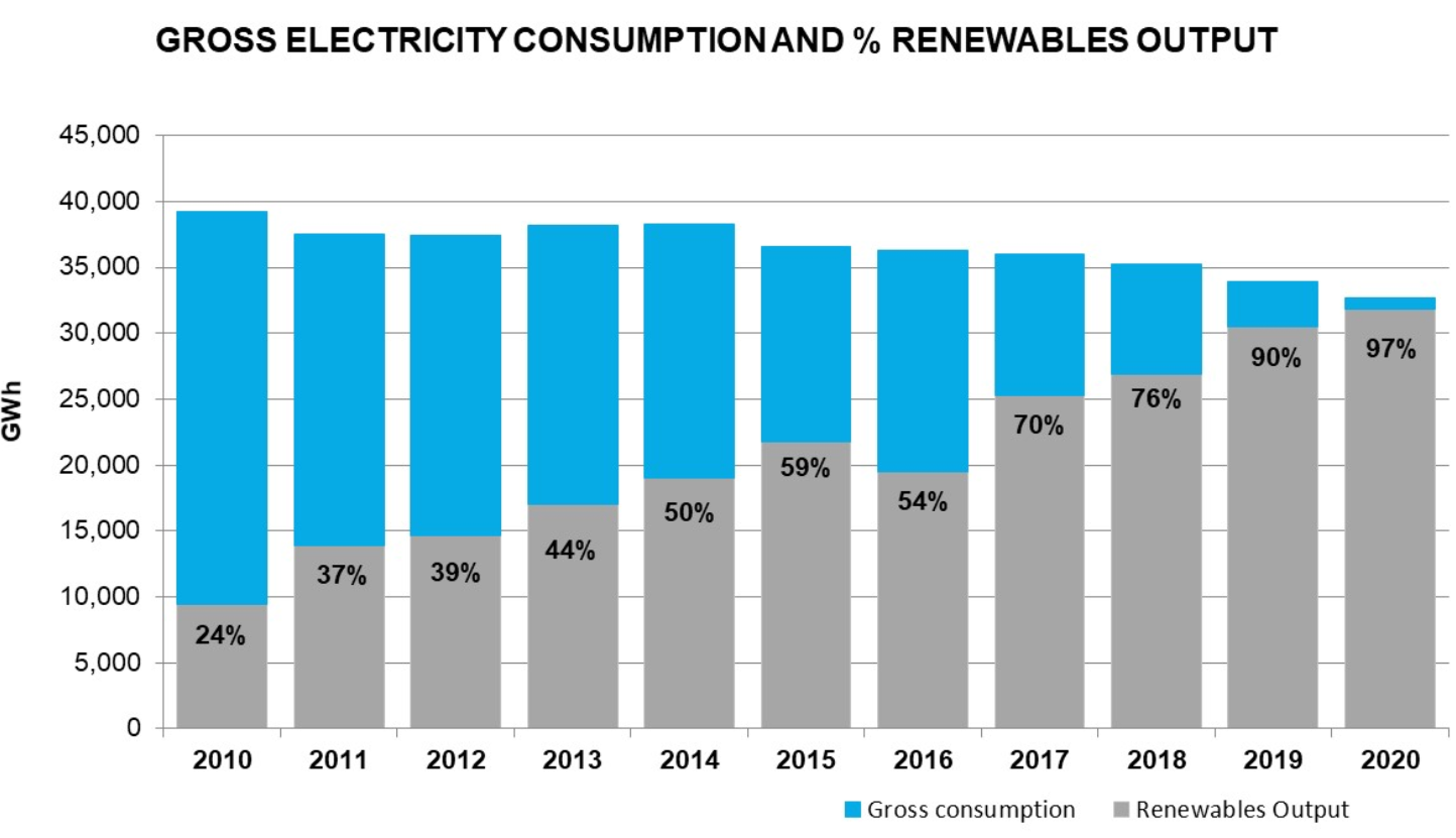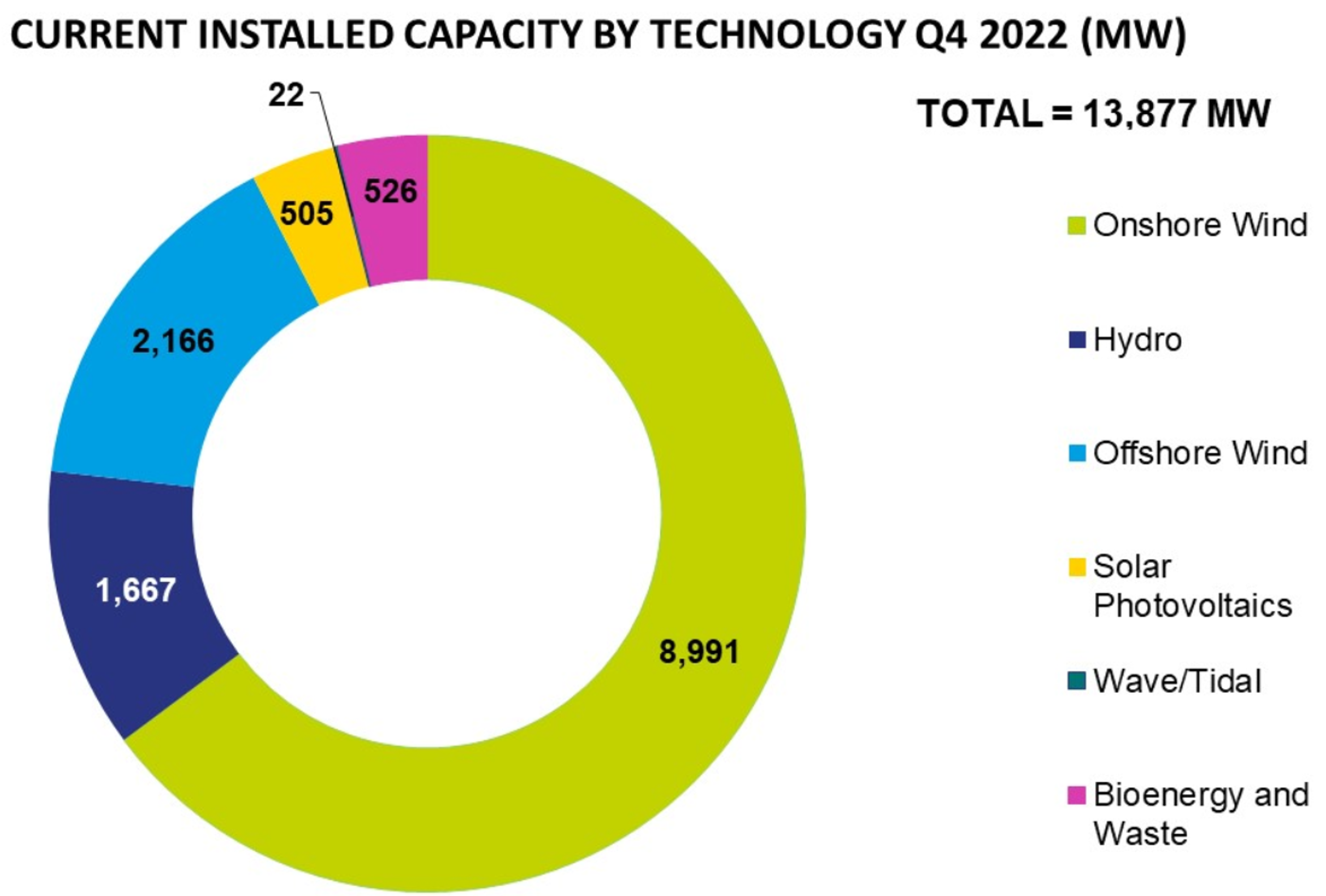Scotland/ UK
Renewable Energy Status


Current Renewable Energy Policy
Current Renewable Energy Policy-General
One of the headline targets in Scotland's Energy Strategy is for the equivalent of 50% of the energy for Scotland's heat, transport and electricity use to come from renewable sources. This is also one of Scotland’s 81 indicators in the National Performance Framework . Scotland's renewable energy target is calculated by the sum of renewable electricity and heat generation and estimated biofuel use in transport in Scotland, divided by Scotland's gross electricity consumption, non-electrical heat demand and energy used for transport. Therefore, progress towards the target will come from increasing renewable generation and reducing energy consumption.
Final figures for 2020 indicate that the equivalent of 26.7% of total Scottish energy consumption came from renewable sources; the highest level to date. It increased from 24.0% in 2019. Renewable energy generated increased by over 1,900 GWh between 2019 and 2020. Renewable electricity contributes about four-fifths of all Scotland’s renewable energy, followed by renewable heat and biofuels in transport.
The total amount of renewable energy generated in 2020 (39,030 GWh) is the equivalent of powering and heating more than 2.1 million households in Scotland, assuming average electricity and gas usage for households in Scotland.
RES - Electricity
In the United Kingdom, the generation of electricity from renewable sources is supported through a combination of a feed-in tariff system, Contracts for Difference system, in terms of a quota obligation, a certificate system and a tax mechanism. Under the feed-in tariff, accredited producers, whose plants have a capacity of less than 5 MW, can sell their electricity at fixed tariff rates established by the Gas and Electricity Market Authority (Ofgem).
The scheme is applicable to England, Wales and Scotland only. Under the Contracts for Difference (CfD) scheme, a RES-E generator and a CfD Counterparty (Low Carbon Contracts Company) enter into a contract, which is based on a difference between the market price and an agreed “strike price”. Currently, the scheme is applicable in England, Wales and Scotland. From April 2017 the CfD scheme is the only support scheme for all new RES-E plants exceeding 5 MW. The first Allocation Round took place in October 2014, while the second Allocation Round took place in April 2017. Furthermore, in Great Britain commercial and industrial users of traditional energy sources are subject to a tax on fossil fuels used for electricity generation. Electricity from renewable sources is exempt from this tax.
RES - Heat
The Renewable Heat Incentive (RHI) is the main instrument for funding RES-H sources in the United Kingdom by supporting RES-H installations with a fixed amount per kWth produced. The scheme consists of two parts: The Non-Domestic RHI (UK) and the Domestic RHI (UK and Northern Ireland until 2016). While the Non-Domestic RHI provides payments to industry, businesses and public sector organisations, is the Domestic RHI open to homeowners, private landlords, social landlords and self-builders. In addition, the Department for Business, Energy & Industrial Strategy (BEIS) plans to introduce changes to the Non-Domestic/Domestic Renewable Heat Incentive (RHI) scheme Regulations that came into effect in September 2017. Further amendments are introduced in 2018.
References & Sources for Further Reading
- Scottish Renewables (https://www.scottishrenewables.com/our-industry/statistics)
- Scottish Government (https://www.gov.scot/publications/energy-statistics-for-scotland-q2-2022/pages/progress-towards-energy-targets/)
- Scottish Parliament (https://digitalpublications.parliament.scot/ResearchBriefings/Report/2021/9/10/2ee753aa-0962-4bf2-982f-b7dc142f554)
